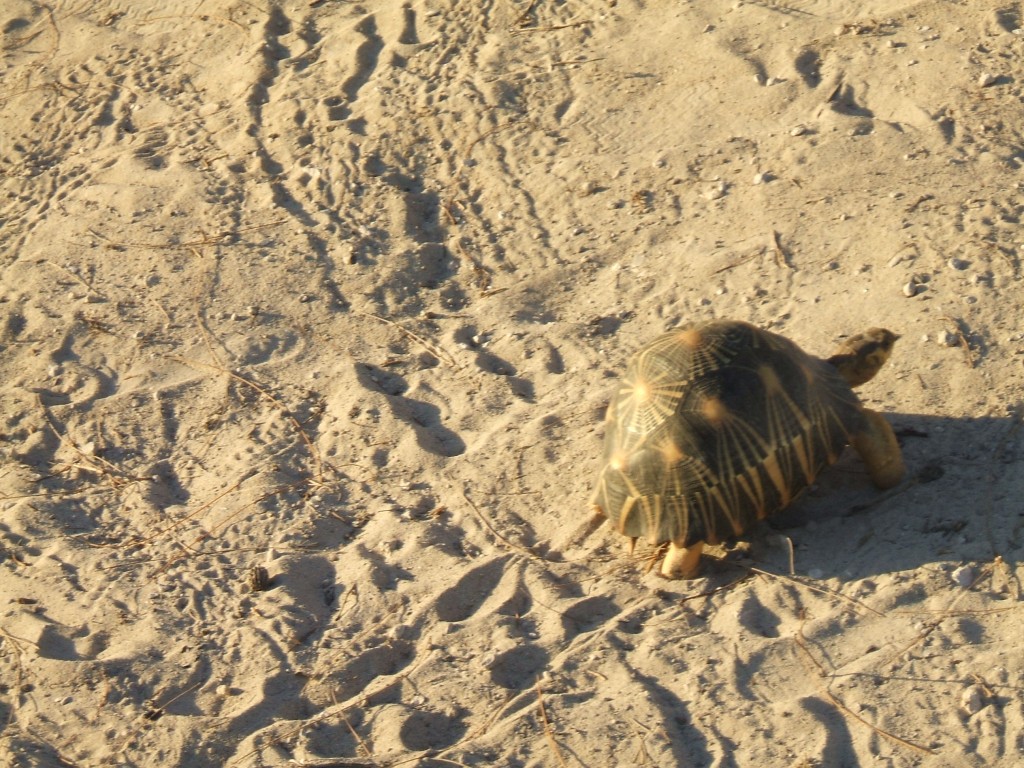by Shanta Barley, Field Scientist, Madagascar
When Ryan Walker, a biologist based at the Open University, and his team crawled on their hands and knees through 60 kilometres of clothes-shredding, hair-plucking spiny forest between Toliara and the Mangoky River, racking up 150 man-hours of surveying, they found just 96 spider tortoises, a critically endangered species found only in southwest Madagascar.
On the 30th January, however, Blue Ventures volunteers counted 99 spider tortoises in a single day and in a far smaller area — five hectares – near a fishing village south of Andavadoake, in a survey that lasted just 50 man-hours. “Mbo misy tsakafy maro ty etoy laha hoary amy ty tany sasany agny satria fady ay mihina azy,” the President of the village told me – “The tortoises are more abundant here than anywhere else, because it is taboo to eat them.”
The spider tortoises belonged to Pyxis arachnoides brygooi, the northern subspecies of P.arachnoides, which is endemic to a 600 kilometre long sliver of spiny forest. The subspecies is extinct across 50% of its original range, and numbers may have fallen by as much as 90%. Not only is the spider tortoise the target of an international yet illegal pet trade – each tortoise, thanks to the golden spider-web like patterns on its carapace, fetches up to $10,000 – but it is also roasted alive and eaten by the Mikea, an elusive forest people. In addition, the spider tortoise’s habitat, spiny forest, has halved in area between 1970 and 2000.
Using a $5000 grant from the Turtle Conservation Fund, Blue Ventures will continue to gather information about the spider tortoises, including their age, sex, weight and carapacial dimensions, in addition to raising awareness about the plight of this unique species: spider tortoises are the only tortoises on Earth that have an anterior plastral hinge, a ‘drawbridge’ at the front of their carapaces that they can winch up.


